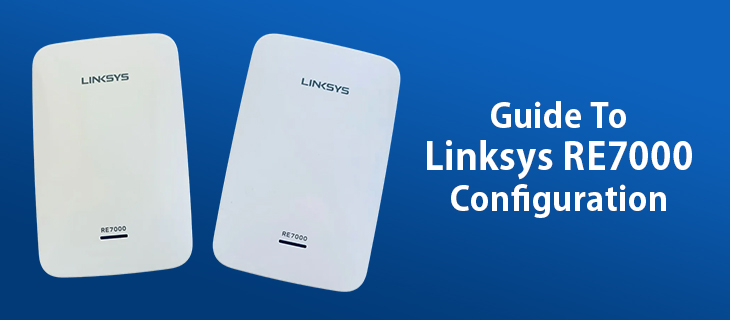Guide To Linksys RE7000 Configuration
Live Chat
Live Chat with our experts & get real-time answers to all your queries.
Chat Now
In a world where fast internet is very crucial for completing our daily tasks, having Wi-Fi dead zones in your home can be as frustrating. Imagine a dropped call in the middle of an important meeting. But fortunately, there is a magical solution for this issue. And that is none other than – The Linksys RE7000 Wi-Fi range extender.

Understanding Dead Zones
Before we jump onto the features of Linksys RE7000 let’s understand what dead zones actually are. Dead zones are areas in your home or office where the Wi-Fi signal is either weak or totally non-existent. These zones can be caused by several factors like:
- Distance from the router.
- Physical Obstacles like walls or furniture.
- Interference from other electronic devices and much more.
How Linksys RE7000 Setup Rescues You From Dead Zones?
- The RE7000 range extender grabs the Wi-Fi signal from your router. Further, adds its superpower to it. And, lastly transmits the same signal into every corner of your home. No matter whether you are on your terrace, balcony, or basement, every place will have full connectivity throughout.
- Linksys RE7000 is equipped with dual-band technology i.e. both 2.4GHz and 5GHz bands. It helps in optimizing your Wi-Fi connection thus making dead zones a thing of the past.
- With the RE7000, your devices can roam freely without fear of losing connectivity. Since it supports seamless roaming it allows your gadgets to switch between the router and the extender easily.
So move around your place freely without worrying. Eliminate dead zones with the Linksys RE7000- your ticket to uninterrupted, stress-free internet heaven.
Now Let’s Move On To Linksys RE7000 Setup.
Setting up Linksys RE7000 is a very easy, straightforward process with just a few simple clicks:
- Step 1: First, make sure both your router and extender are plugged into power outlets and are in close proximity. Make use of an Ethernet Cable to connect both the devices for a stable connection.
- Step 2: The next step is to open an updated web browser of your choice on your laptop or smartphone. Type in the Web or IP address to access your extender. The default credentials are usually- http://extender.linksys.com,“192.168.1.1″
- Step 3: Once logged in, follow the on-screen instructions to get started.
- Step 4: Wait for the Linksys Extender name to appear on your screen, and click on it. You’ll be asked to enter the default password. You can find it in your user manual or at the bottom of your extender.
- Step 5: Once you’re connected, it’s better to restart your device. It helps ensure that it is properly working. Now get access to the best internet quality and no more dead zones. Finally, feel free to customize your settings as per your liking. You can adjust your network name, password, and other preferences to make your browsing experience as smooth as possible. Don’t forget to save and apply these changes.
Congratulations on the successful installation of your Linksys RE7000 Wi-Fi Range Extender. Now enjoy a Wi-Fi heaven where you can have the best internet rides.
If you still face any issues during the Linksys RE7000 setup first thing you should do is check the user manual. If that doesn’t help then you can seek assistance from the Linksys support and guidance team by visiting our official website. We will try to solve the issue in the shortest time possible.

